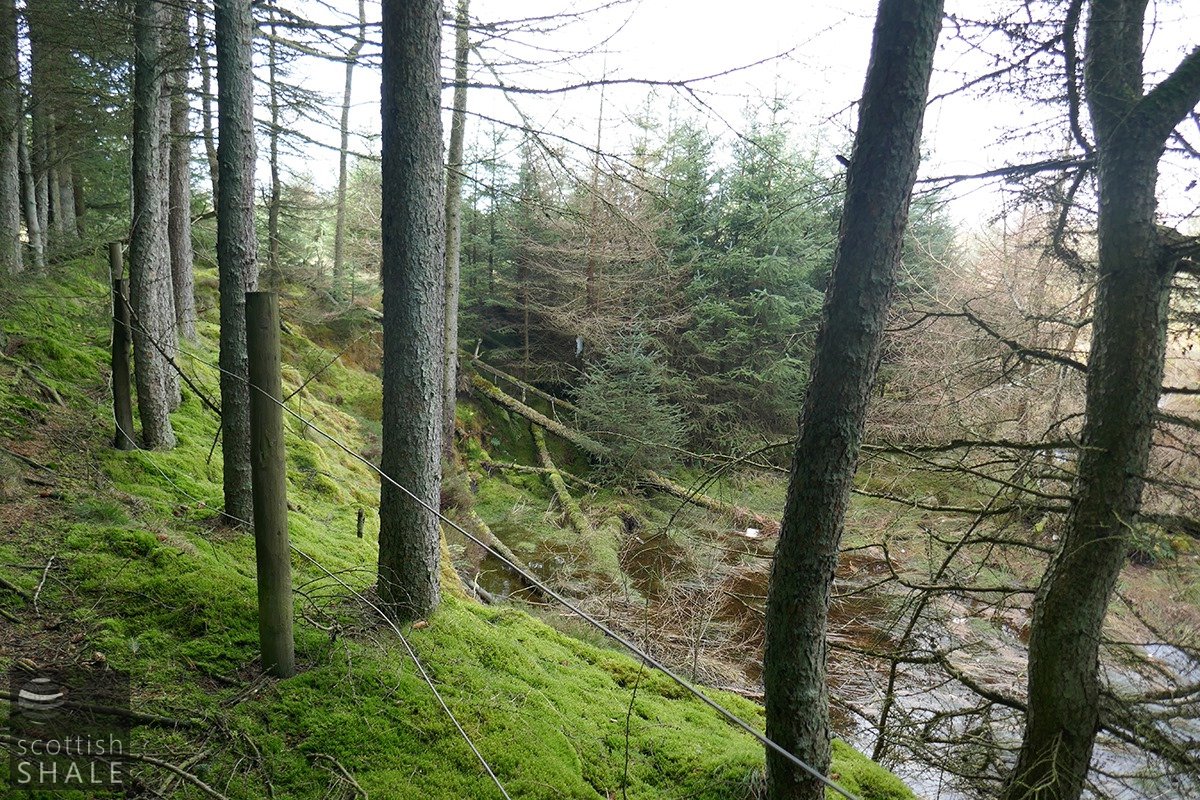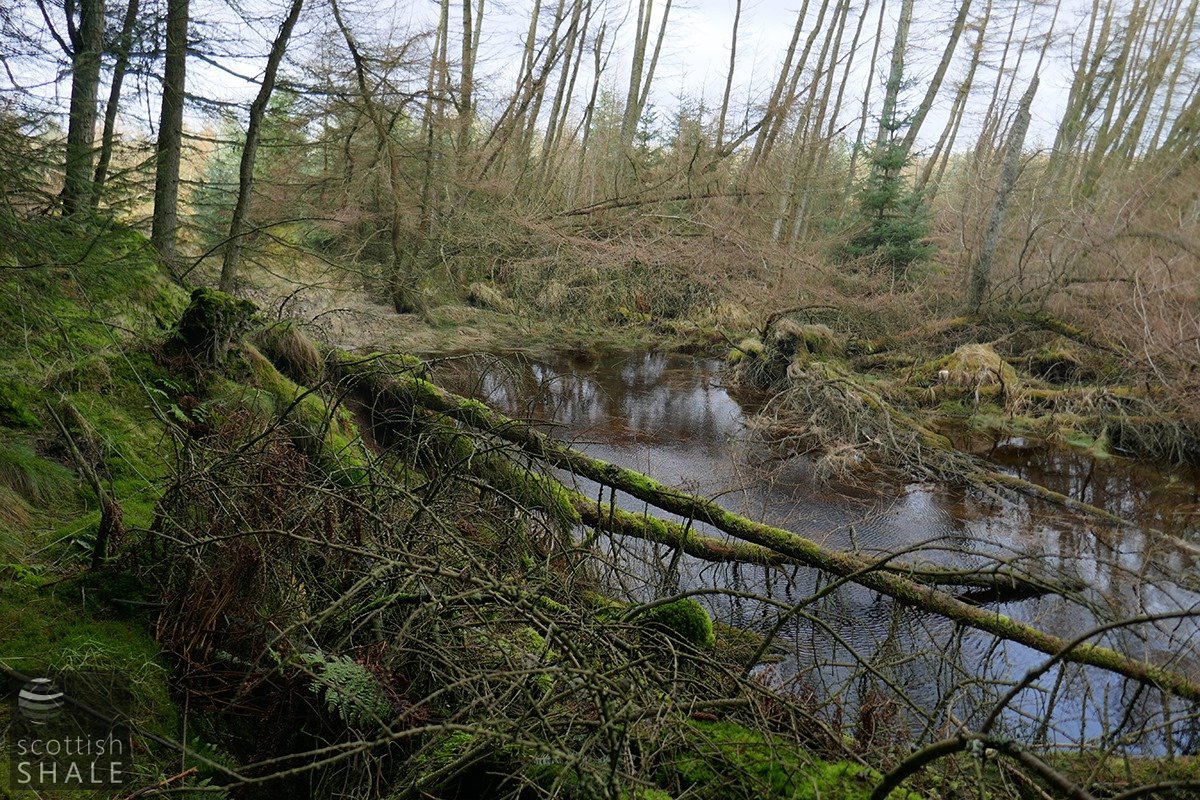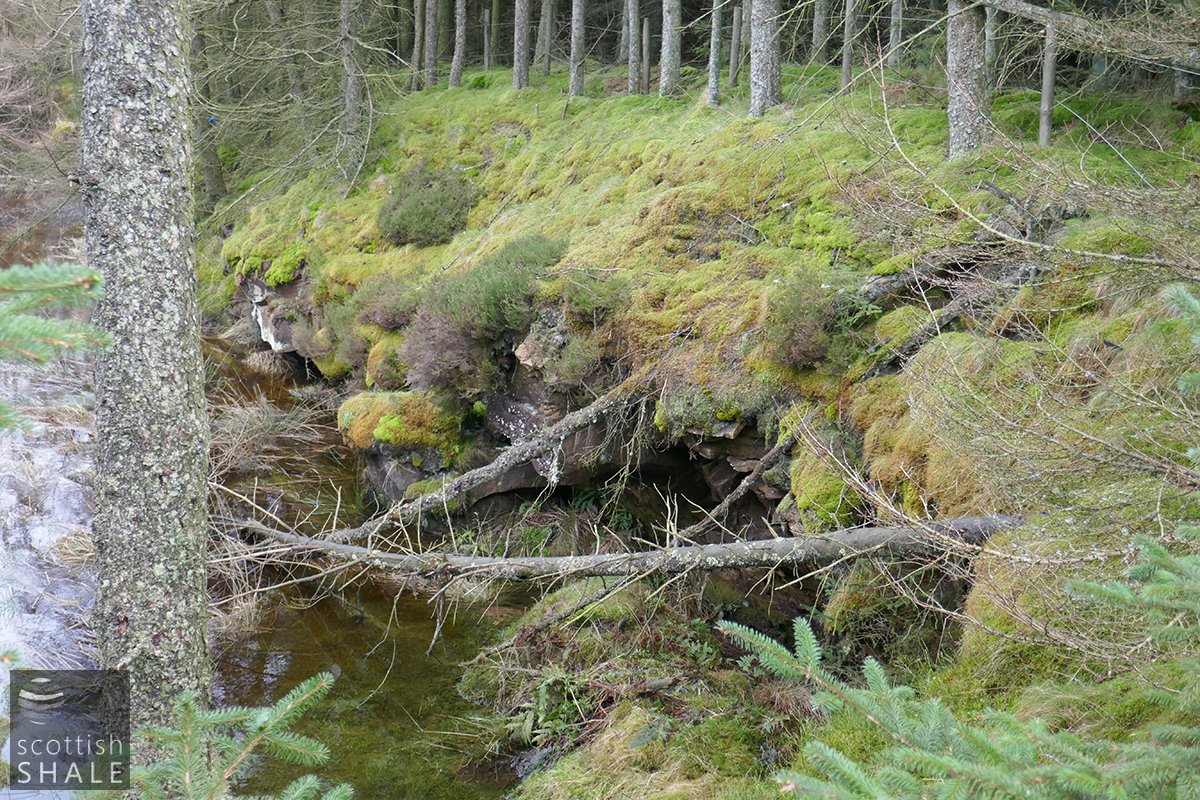Small Tragedies in Woodmuir
Woodmuir row, collieries and quarry.
F20008, first published 22nd February 2020
A correspondent to the Airdrie & Coatbridge Advertiser, writing in 1891, described the delights of Woodmuir, a small mining community in West Calder parish, near the present-day village of Breich. “Some people call it Blinkbonny; but by whatever name it is known it is one of the those spots where if you want a bit of fresh air, you will surely not be disappointed. It has a coalpit, a store, a couple of rows of houses, but for a tree or shrub you would look in vain.”
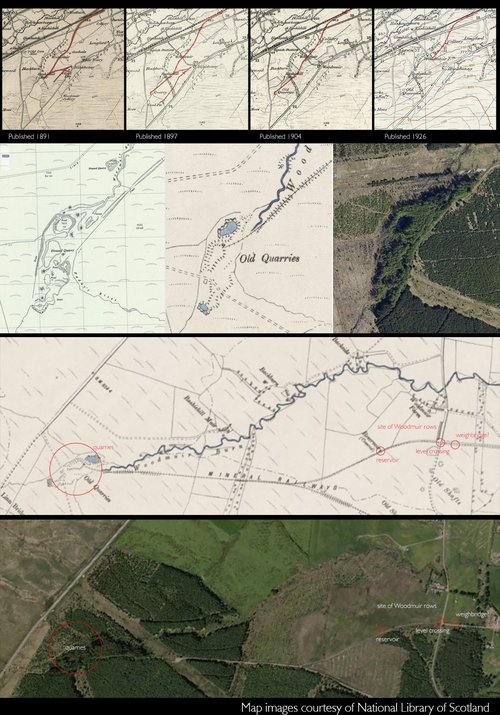
There’s still ample fresh air at Woodmuir, but today, by a strange turn of events, most of the landscape is hidden beneath the coniferous plantations of Woodmuir forest.
Many of the tracks installed to service this forestry follow the route of a mineral railway that once zig-zagged its way up the hillside to serve the Woodmuir coal pits, which lay close to the A704 Lanark road.
Coal had been worked on a small scale at Woodmuir since early in the 19th century, but in 1859 a significant new pit was sunk in Lord Belhaven’s land at Blinkbonny, which was to be the first of four Woodmuir pits to be sunk in that area. This activity encouraged the Caledonian Railway to install a mile long branch line as part of their new Midcalder to Cleland railway, which opened in 1869. The Caledonian’s line extended only as far as Woodmuir farm. From there onwards, the railway was built and operated by the colliery company. This was a substantially constructed line, with various cuttings and embankments, and in order to gain the necessary height, trains had to change direction twice in a zig-zag arrangement. This zig-zag line was in place by 1875, when shown on Airey’s railway map, but various changes to the track layout subsequently took place. Coke ovens were built close to Woodmuir No.2 during in the late 1870’s, rails to No.1 pit were lifted following its closure, and the upper line was then extended even further uphill on opening of No.4 pit. At about 975 ft. about sea level, Woodmuir No.4 pit was probably the highest point reached by railway in West Lothian.
The lower line was also extended westward to serve sandstone quarries within sight of the A706 near Linn Bridge. These quarries seem to have been active since the 1860’s. Although quite substantial volumes of freestone were worked during the 1880’s, the Geological Survey reported that “the rock proved to be inferior and soft with a peculiar concretionary structure”
The coalfield was exhausted by 1897, when the buildings and plant of No.4 pit were put up for auction. Included in this sale was a “12 inch locomotive by Barclay, Kilmarnock” and “3 old railway trucks”. Presumably this was the little train that had battled up the hillside through the years. The rails seem to have been lifted at that time, although the lower line to the quarry may have remained in place a few years longer.
As the old Woodmuir pits were being dismantled, the Woodmuir Coal Company sank new shafts to the east of Woodmuir farm (their No.5 & 6 pits) reaching new reserves of coal previously inaccessible due to faulting. This new Woodmuir pit continued in production until 1963, linked to the Caledonian Railway branch-line.
As if often the case, history is only recorded when horrible things happen. Two small tragedies that took place during 1889 throw a little light on life in Woodmuir. In June of that year, a young man named James Ferguson was working in the Woodmuir Quarries, removing waste from above the rock face. A bogie on the temporary railway used to remove this material tipped suddenly and crushed him. It was reported that “he died while being removed home”.
Five year old George Paterson, whose father ran the village store, was knocked down and killed by the Woodmuir Coal Company’s locomotive. The newspaper reported (in rather excessive detail) that the child had sustained a fracture to the skull, had his left arm broken and suffered injury to his thigh. A subsequent account of the funeral posed the question “why are not these dangerous places fenced in such a way as to prevent such disasters?…..Probably precautions will be taken now, but it is too late to be of any earthly use to little George Paterson”.
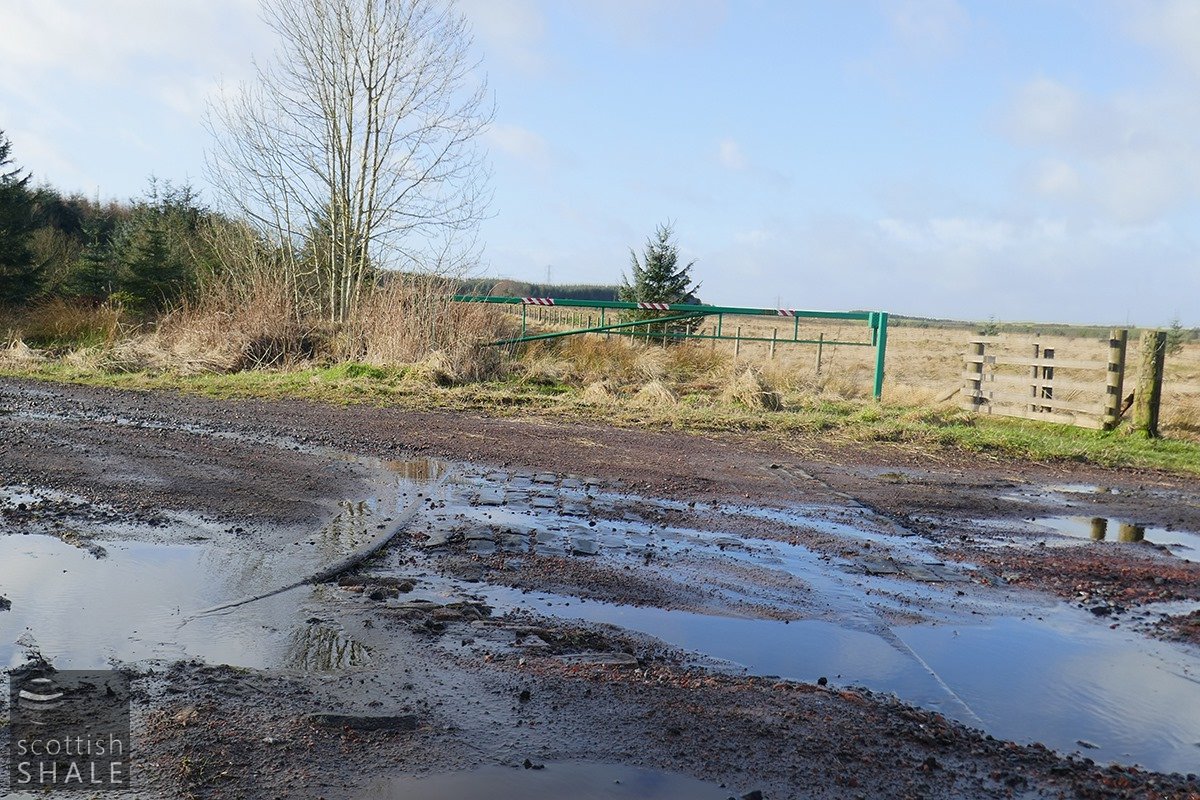
Rails still in place at the level crossing near Woodmuir Farm
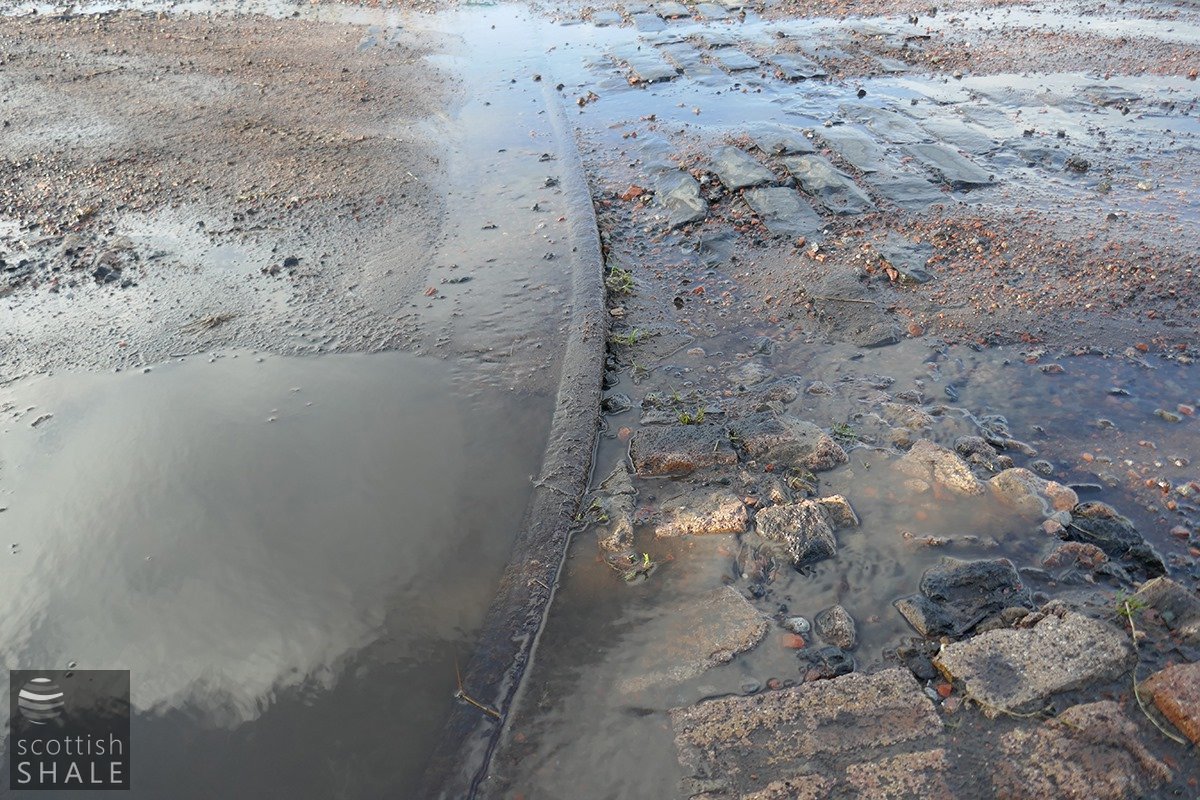
Rails still in place at the level crossing near Woodmuir Farm
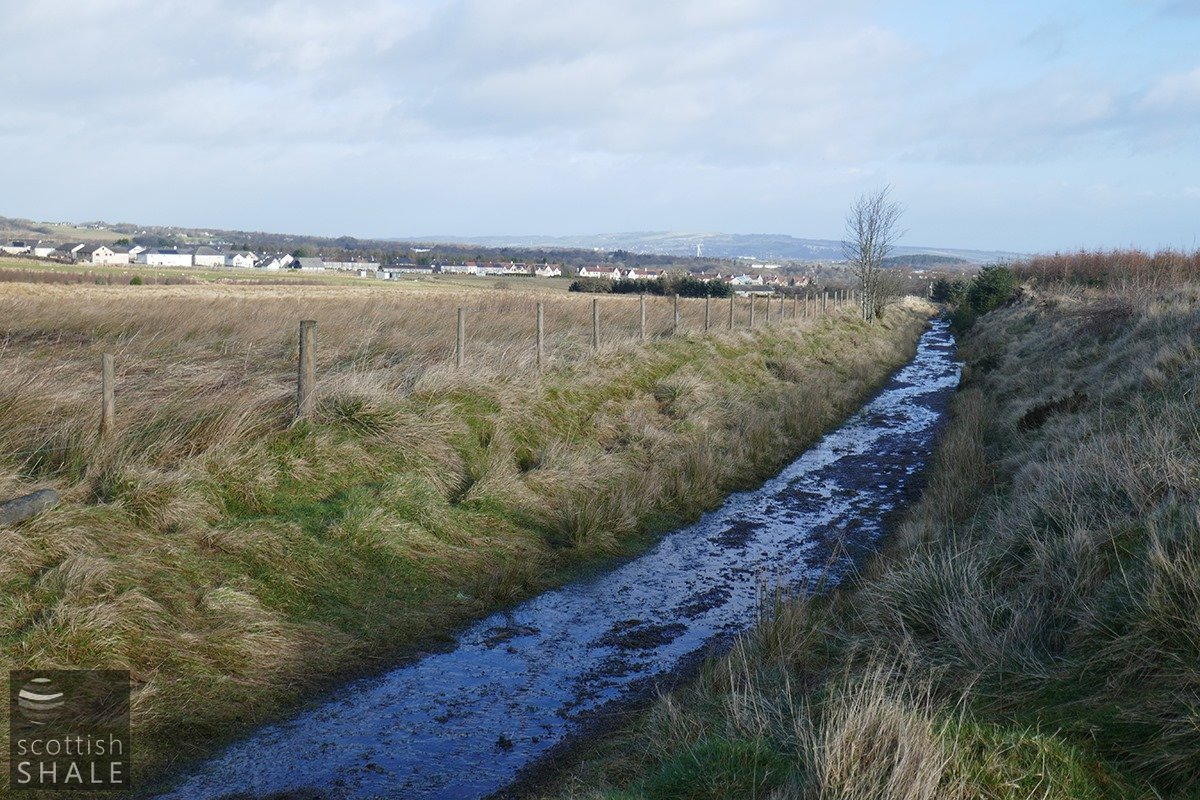
Route of the railway going downhill towards Woodmuir farm
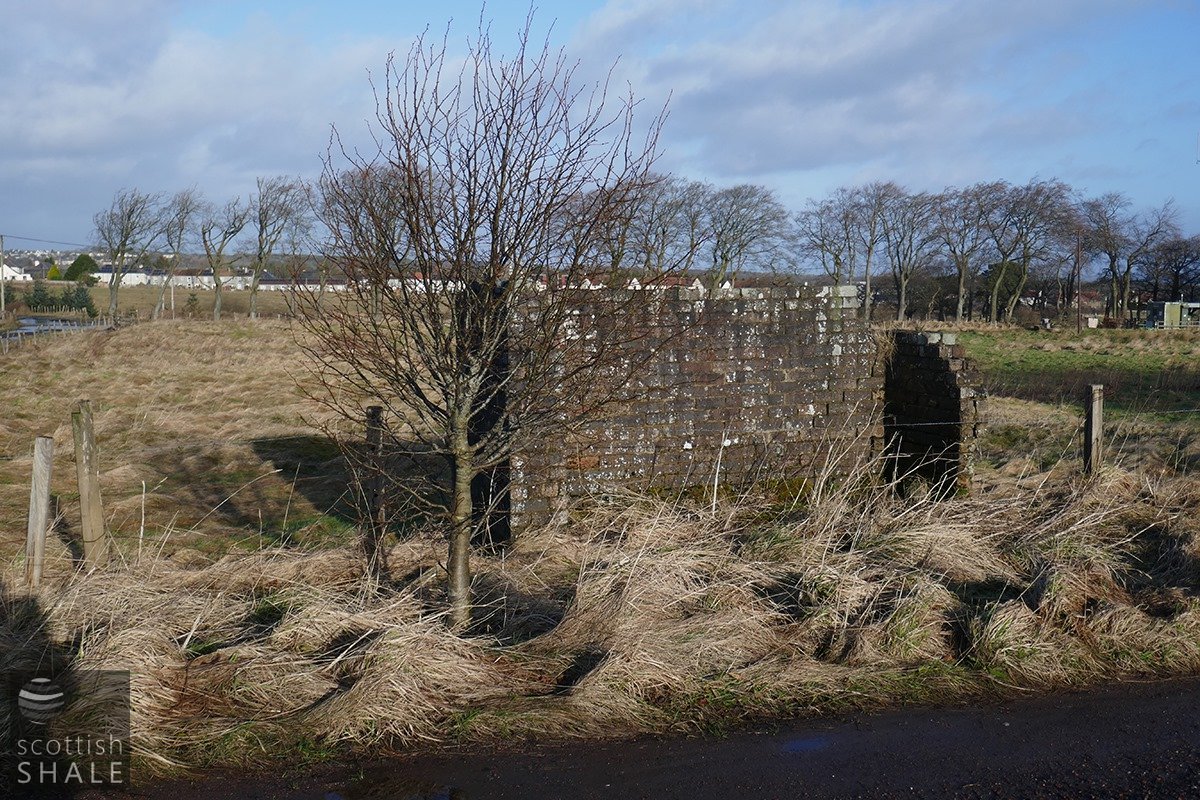
Brick walls close to the level crossing - perhaps the remains of a weighbridge? shown on the 1896 map. It seems that rails were in place here until closure of Woodmuir pit in the 1960's
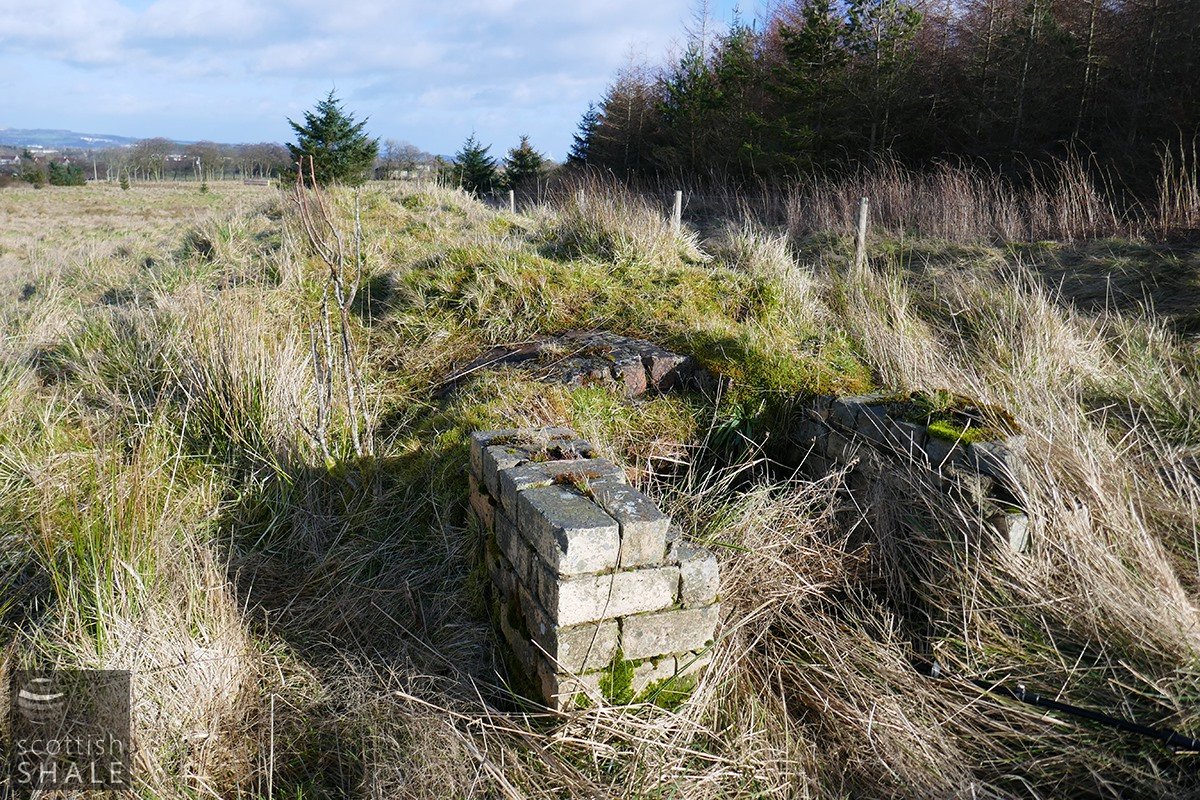
The structure marked as "covered reservoir" on the 1896 map, beside the railway. The strong brick arch structure seems fully intact.
